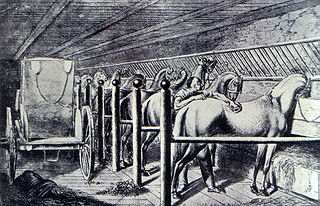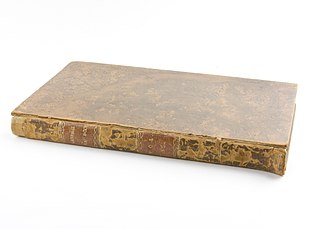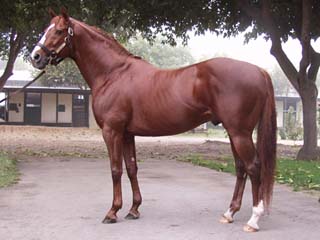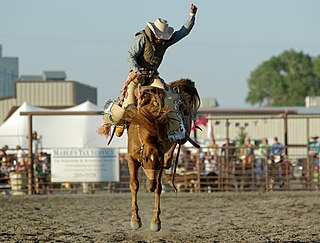
A paddock is a small enclosure for horses. In the United Kingdom, this term also applies to a field for a general automobile racing competition, particularly Formula 1.

A paddock is a small enclosure for horses. In the United Kingdom, this term also applies to a field for a general automobile racing competition, particularly Formula 1.


The most common design provides an area for exercise and is often situated near the stables. Larger paddocks may have grass maintained in them, but many are dirt or a similar natural surface. In those cases drainage and a top layer of sand are often used to keep a suitable surface in the paddock.
In the American West, such an enclosure is often called a corral, and may be used to contain cattle or horses, occasionally other livestock. The word paddock is also used to describe other small, fenced areas that hold horses, such as a saddling paddock at a racetrack, the area where race horses are saddled before a horse race.
Horse breeders may let stallions loose in a paddock or field with mares that they would like the stallion to impregnate. This allows the most natural form of mating to occur and the regularity of mating using this method promotes the chances of a mare becoming pregnant. However, high-value stallions are rarely used for breeding in this manner, as uninterested mares may severely injure them. [1]
In Australia and New Zealand the word paddock is used instead of field to describe a section of farmland, regardless of size.
Horse breeding is reproduction in horses, and particularly the human-directed process of selective breeding of animals, particularly purebred horses of a given breed. Planned matings can be used to produce specifically desired characteristics in domesticated horses. Furthermore, modern breeding management and technologies can increase the rate of conception, a healthy pregnancy, and successful foaling.

A foal is an equine up to one year old; this term is used mainly for horses, but can be used for donkeys. More specific terms are colt for a male foal and filly for a female foal, and are used until the horse is three or four. When the foal is nursing from its dam (mother), it may also be called a "suckling". After it has been weaned from its dam, it may be called a "weanling". When a mare is pregnant, she is said to be "in foal". When the mare gives birth, she is "foaling", and the impending birth is usually stated as "to foal". A newborn horse is "foaled".

Grévy's zebra, also known as the imperial zebra, is the largest living wild equid and the most threatened of the three species of zebra, the other two being the plains zebra and the mountain zebra. Named after Jules Grévy, it is found in parts of Kenya and Ethiopia. Superficially, Grévy's zebras' physical features can help to identify it from the other zebra species; their overall appearance is slightly closer to that of a mule, compared to the more "equine" (horse) appearance of the plains and mountain zebras. Compared to other zebra species, Grévy's are the tallest; they have mule-like, larger ears, and have the tightest stripes of all zebras. They have distinctively erect manes, and more slender snouts.

An animal stall is an enclosure housing one or a few animals. Stalls for animals can often be found wherever animals are kept: a horse stable is often a purpose-built and permanent structure. A farmer's barn may be subdivided into animal stalls or pens for cows and other livestock.

A stallion is a male horse that has not been gelded (castrated). Stallions follow the conformation and phenotype of their breed, but within that standard, the presence of hormones such as testosterone may give stallions a thicker, "cresty" neck, as well as a somewhat more muscular physique as compared to female horses, known as mares, and castrated males, called geldings.

A mare is an adult female horse or other equine. In most cases, a mare is a female horse over the age of three, and a filly is a female horse three and younger. In Thoroughbred horse racing, a mare is defined as a female horse more than four years old. The word can also be used for other female equine animals, particularly mules and zebras, but a female donkey is usually called a "jenny". A broodmare is a mare used for breeding.

Wetherby Racecourse is a racecourse situated near the market town of Wetherby in West Yorkshire, England, located 12 miles (19 km) from Leeds city centre. For most of its history the course has hosted only National Hunt racing but staged its first Flat racing fixture in April 2015.

Horse behavior is best understood from the view that horses are prey animals with a well-developed fight-or-flight response. Their first reaction to a threat is often to flee, although sometimes they stand their ground and defend themselves or their offspring in cases where flight is untenable, such as when a foal would be threatened.

A pen is an enclosure for holding livestock. It may also perhaps be used as a term for an enclosure for other animals such as pets that are unwanted inside the house. The term describes types of enclosures that may confine one or many animals. Construction and terminology vary depending on the region of the world, purpose, animal species to be confined, local materials used and tradition. Pen or penning as a verb refers to the act of confining animals in an enclosure.

A yearling is a young horse either male or female that is between one and two years old. Yearlings are comparable in development to a very early adolescent and are not fully mature physically. While they may be in the earliest stages of sexual maturity, they are considered too young to be breeding stock.
Studbook selection is a process used in certain breeds of horses to select breeding stock. It allows a breed registry to direct the evolution of the breed towards the ideal by eliminating unhealthy or undesirable animals from the population. The removal of individuals from a population is called culling, and does not suggest killing the animal in question. Typically, culls are castrated or they and their offspring are unable to be registered.

Thoroughbred breeding theories, or racehorse theories, are used by horse breeders in an attempt to arrange matings that produce progeny successful in horse racing. Bloodstock experts also rely on these theories when purchasing young horses or breeding stock. A basic understanding of these theories can also help the racing public understand a horse's theoretical genetic potential. The breeding theories stem from the belief that careful analysis of bloodlines can lend predictability to breeding outcomes. A well-designed mating increases the probability of the offspring's success, although many other factors also come into play.
An equestrian facility is created and maintained for the purpose of accommodating, training or competing equids, especially horses. Based on their use, they may be known as a barn, stables, or riding hall and may include commercial operations described by terms such as a boarding stable, livery yard, or livery stable. Larger facilities may be called equestrian centers and co-located with complementary services such as a riding school, farriers, vets, tack shops, or equipment repair.

The Thoroughbred is a horse breed developed for horse racing. Although the word thoroughbred is sometimes used to refer to any breed of purebred horse, it technically refers only to the Thoroughbred breed. Thoroughbreds are considered "hot-blooded" horses that are known for agility, speed, and spirit.

This is a basic glossary of equestrian terms that includes both technical terminology and jargon developed over the centuries for horses and other equidae, as well as various horse-related concepts. Where noted, some terms are used only in American English (US), only in British English (UK), or are regional to a particular part of the world, such as Australia (AU).

The Auvergne horse is a breed of light draft horse from the Auvergne region of south central France. It stands 143 to 147 centimetres at the withers, and weighs 450–650 kilograms (990–1,430 lb). Coat colours are bay or seal brown. It is used mainly for trekking. It was recognised as a breed by the Haras Nationaux, the French association of horse breeders in December 2012. The standard is published by a breeders' association, the Association Nationale du Cheval de Race Auvergne.
The following is a glossary of North American horse racing.

The Henson horse, or cheval de Henson, is a modern horse breed from northeast France. It was created by the selective breeding of light saddle horses with the smaller, heavier Norwegian Fjord horse to create small horses suitable for the equestrian vacation industry. The breeders' association, Association du Cheval Henson, was formed in 1983. In 1995 the studbook was closed to horses not born from Henson parents, and in 2003 the breed was officially recognised by the French government agencies for horse breeding. A hardy breed of horse, each winter the broodmares and youngstock from several breeders are let loose together to graze freely in the wetland reserves in France.
Horses and horse culture play a large role in the daily and national life in Mongolia. It is traditionally said that "A Mongol without a horse is like a bird without the wings." Elizabeth Kimball Kendall, who travelled through Mongolia in 1911, observed, "To appreciate the Mongol you must see him on horseback,—and indeed you rarely see him otherwise, for he does not put foot to ground if he can help it. The Mongol without his pony is only half a Mongol, but with his pony he is as good as two men. It is a fine sight to see him tearing over the plain, loose bridle, easy seat, much like the Western cowboy, but with less sprawl.".

A bucking horse is any breed of horse, male or female, with a propensity to buck. They have been, and still are, referred to by various names, including bronco, broncho, and roughstock.